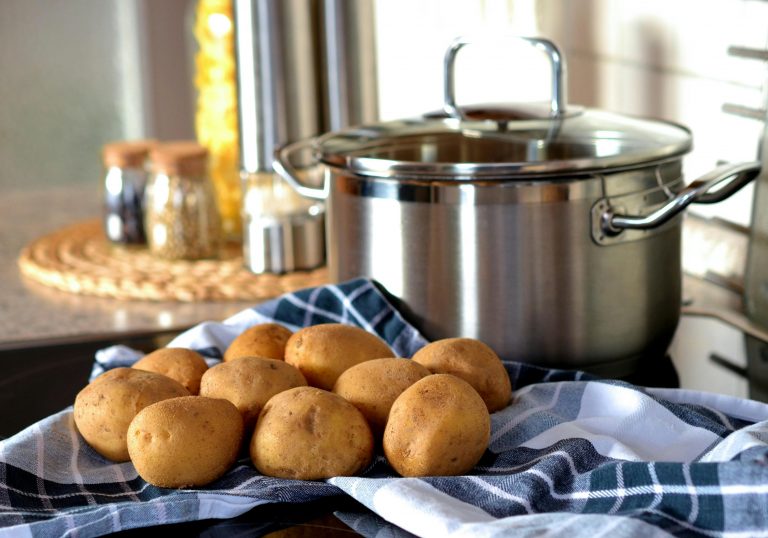Many people don’t think potatoes stand a chance in the freezer: their high water content leads to ice crystals when frozen, rupturing cell walls and becoming mushy and starchy when thawed. But with the right techniques, you can freeze them successfully without sacrificing flavour or texture. In this guide, we’ll share the tricks chefs rely on so you can stock your freezer with perfectly prepped taters, whether you’re a seasoned home cook or just getting started.
Why bother?
Whether you’re sitting with way too many potatoes in your kitchen or worried you won’t get to those last few in time before you go on holiday, freezing potatoes can:
- Extend shelf life: Keep potatoes fresher for much longer without them starting to sprout (or worse, ferment).
- Jump-start kitchen prep: The worst thing after a long day is coming home only to peel and chop a bunch of potatoes. Frozen potatoes are ready-to-use, reducing the time you have to spend in the kitchen after a super busy day.
The best potatoes to freeze
- Waxy: Hold their shape, are great for soups, stews, and salads. Look for Red Bliss, New Potatoes, Fabula, or BP1.
- Starchy: Produce a fluffy texture, perfect for mash, fries, and wedges. Look for Russet, Up-to-Date, Idaho, and Mondial.
- Sweet potatoes: Versatile and naturally creamy, ideal for purées, pies, and casseroles. Look for Beauregard, Jewel, or Blesbok.
Step-by-step guides for freezing potatoes
The secret to freezing potatoes is blanching them until just softened or tender, but not fully cooked through. This helps to lock in their texture and flavour and prevent their cells from bursting in the freezer.
How to freeze mashed potatoes
- Prepare mash as usual, but add a splash of extra liquid (like milk or cream). This will firm up in the freezer and keep the texture optimal.
- Scoop into portions and freeze on a baking sheet for at least 8 hours or overnight.
- Transfer to a zip-lock bag, label, and store in the freezer.
Defrosting & Reheating: Thaw in the fridge, then warm gently on low-medium heat with a knob of butter.
How to freeze fries and wedges
- Cut into desired shapes, fries or wedges.
- Blanch in slightly salted water until slightly softened but not fully tender.
- Transfer to an ice bath to stop further cooking.
- Drain and pat dry with a clean cloth or paper towel.
- Spread in a single layer on a baking sheet and freeze overnight.
- Transfer to a zip-lock bag, label, and store in the freezer.
Defrosting & Reheating: Cook straight from frozen: bake or fry until golden.
How to freeze whole or leftover potatoes
- Peel (optional) and cut potatoes into large chunks or quarters.
- Blanch until just tender.
- Shock in an ice bath.
- Spread on a baking sheet and freeze for a few hours or overnight.
- Transfer into a zip-lock bag, label, and store in the freezer.
Defrosting & Reheating: Use directly from frozen in soups and stews, or thaw in the fridge for casseroles, bakes, and mash.
Freezing potatoes is a simple way to cut down food waste, save time, and make weeknight cooking a breeze. With just a bit of prep, you’ll always have a stash of taters ready to go, whether for comfort food mash, crispy fries, or hearty soups.
Also See: How to freeze cooked meals to save your meal prep
How to freeze cooked meals to save your meal prep

